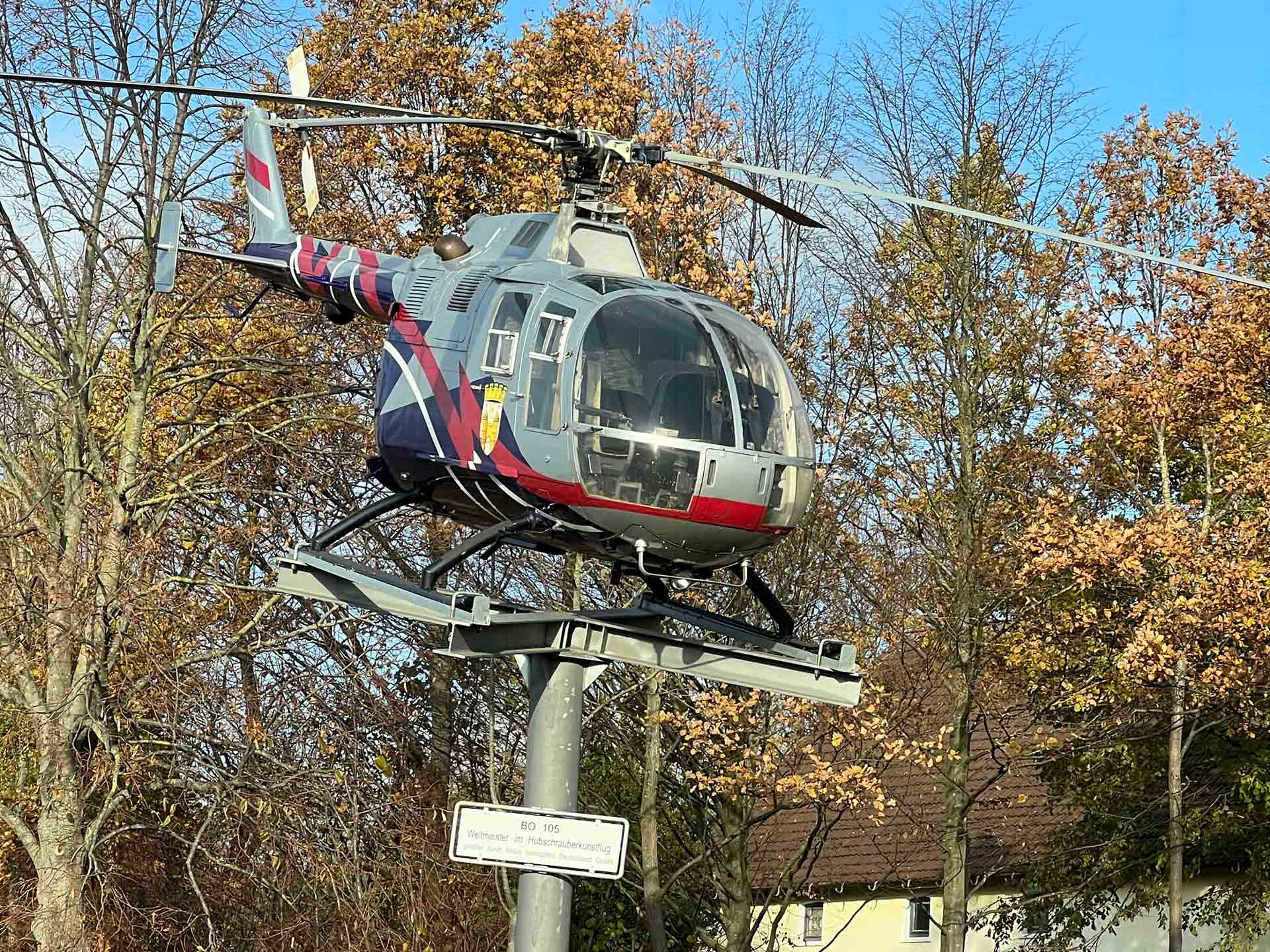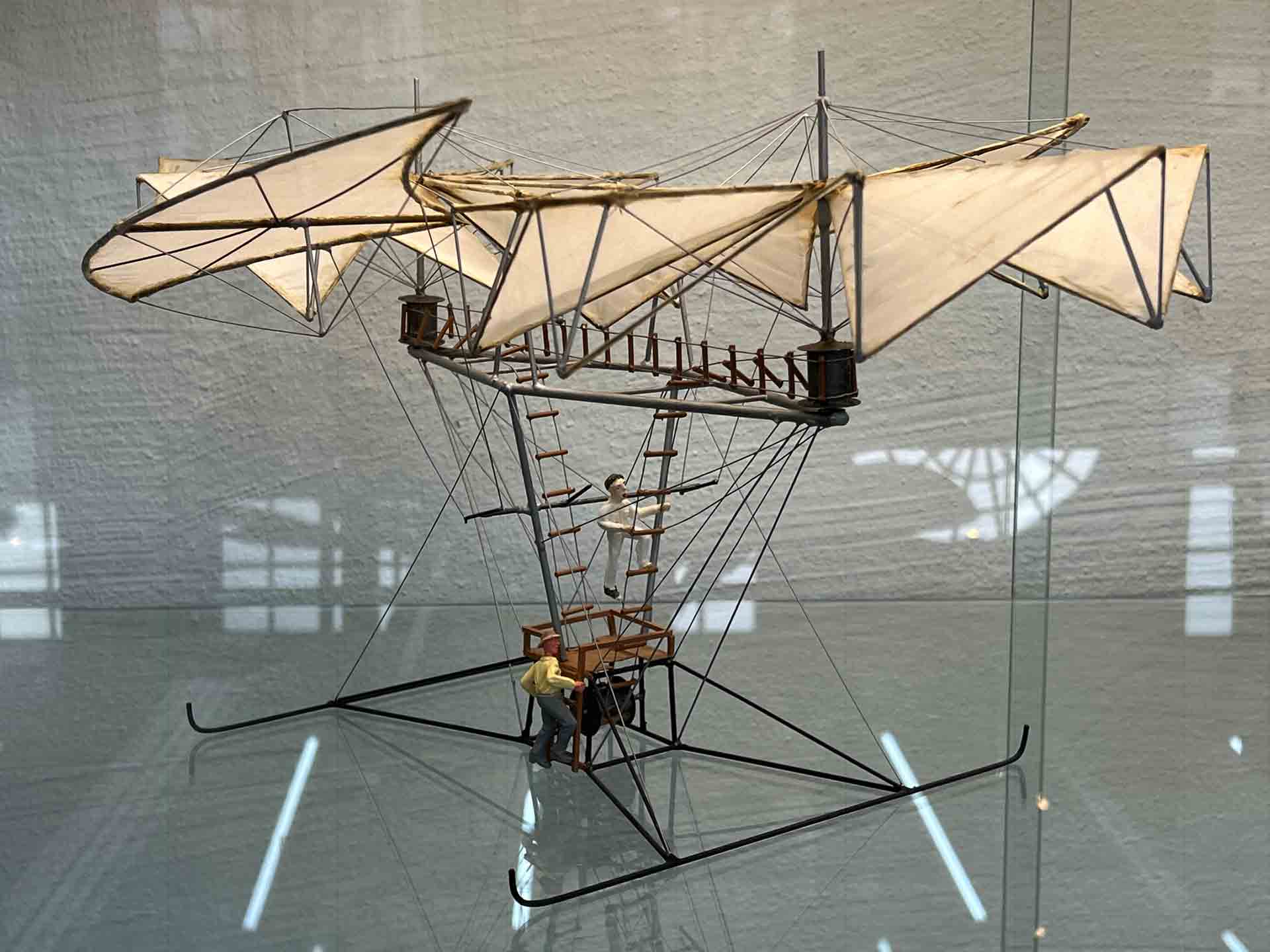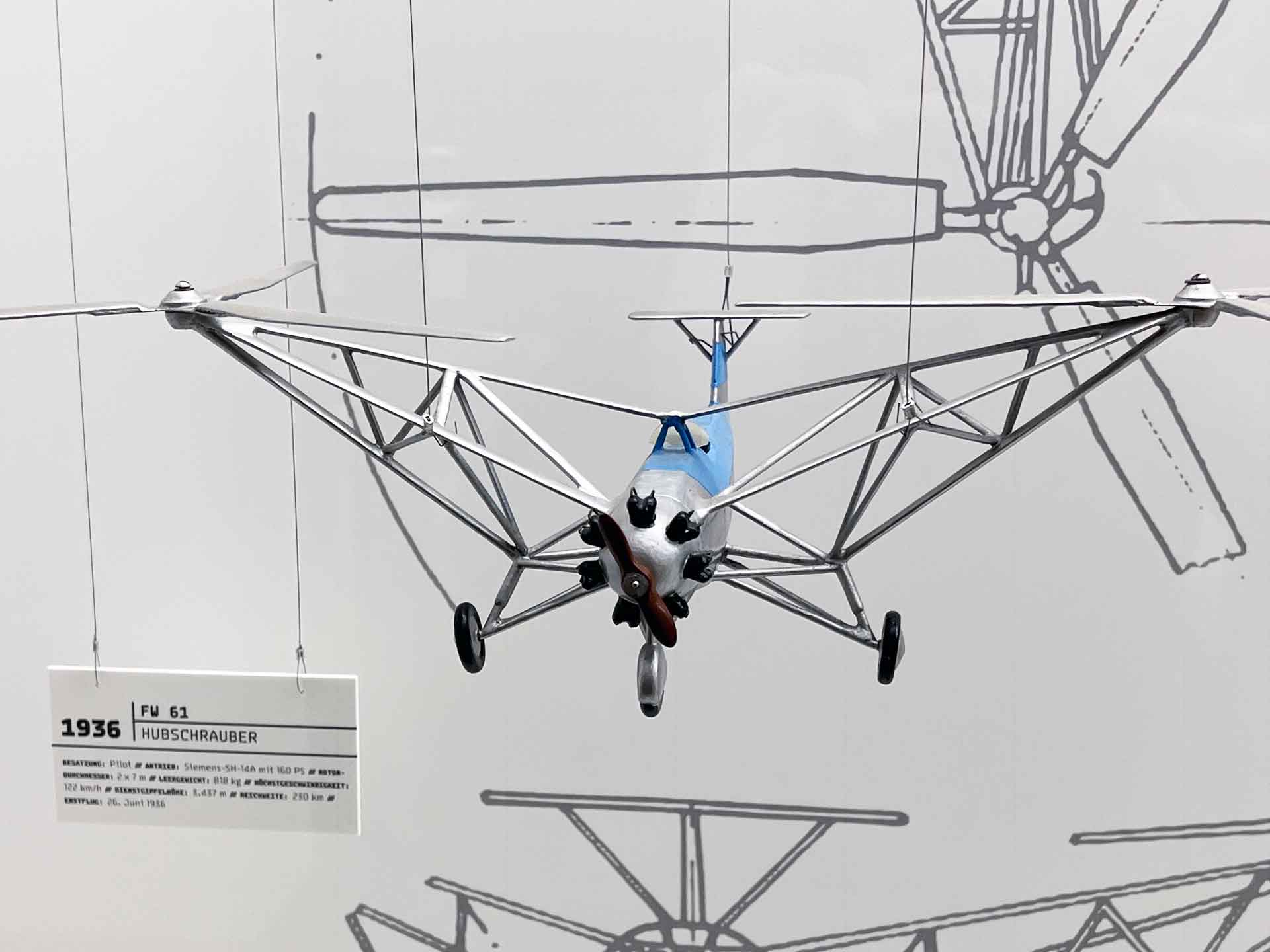The wondrous world of rotorcraft
The small German town of Bückeburg in Lower Saxony is known for its castle, but this provincial location has been the home of Europe’s largest helicopter museum for more than 50 years. Boasting 53 rare originals and hundreds of models, it offers a unique discovery of the wondrous world of rotorcraft.
The MBB Bo 105 is one of the most successful German helicopters, which first flew in 1967 and still operates today. This aircraft is used as an eye-catcher in Bückeburg to draw attention to the museum; it was formerly used to fly aerobatics.
There are many aircraft museums all over the world. Some of them specialize, for instance, on air ships, military or gliders. What’s very rare are collections exclusively focusing on the species of rotorcraft, meaning helicopters. Although they have a very long history, as Leonado da Vinci came up with first drawings already in the 15th century. Many genial engineers and inventors of the 20th century initially developed flying machines resembling helicopters and later built sophisticated rotor-driven vehicles, among them Louis Breguet, Henrich Focke and most importantly, Igor Sikorsky. Their game-changing contributions to the evolution are extensively appreciated at the helicopter museum.
This French Airbus Dauphin occupies a prime spot up high in front of the museum. It was built in 1978 and initially flew the then Romanian president; from 1988, it was operated in Germany as a rescue helicopter.
The small town of Bückeburg, population 19,000, lies a one-hour drive southwest from Hanover in Lower Saxony and has a strong connection with helicopter flying. The nearby airfield of Achim had been used as an alternate during the Berlin airlift, and since 1960, the Bundeswehr Army Aviation Center was stationed here. Since 2015, the International Helicopter Training Center has been teaching German and allied military pilots how to fly helicopters. In the early 1960s, a single pilot of the Army Aviation Center started collecting everything related to helicopters. This resulted initially in a noteworthy teaching collection at the airfield, which was then publicly presented in Bückeburg from 1971 in what was Europe’s first and only helicopter museum. The city made a spacious, historic half-timbered house available for it, but initially, the helicopters had to be put on display outdoors in the garden. Only in 1980, an annex was built, then housing 40 helicopters, complemented by a new glass building in 2011.
This huge glass display case in the entrance area holds no less than 500 1/72-scale rotorcraft models from all over the world. From the twin-rotor Boeing Vertol 234 operated by British Airways to the small Soviet Mil Mi-2, flown also in East Germany, to the huge prototype Mil V-12 built in 1968 by the Soviet Union. A “showcase of pioneers” presents scale models of early attempts at rotorcraft.
Every important helicopter at one glance
The first eye-catcher already lures visitors into the entrance area of the museum. In a huge glass display case, called “Germany’s biggest” by the museum, no less than 500 rotorcraft from all over the world are presented in the 1/72 scale. The entire world of vertical flight basically at a glance – and there are truly curious and peculiar versions. Hearts of helicopter fans and model freaks alike will beat faster here. The tour through the museum with three buildings and 2500 square meters in total exhibition space is divided into seven zones. At the beginning, the inventors and pioneers are presented with their histories and flying machines in the form of immaculately detailed models, showing how much they have copied nature. It becomes clear early on: you don’t have to be a helicopter fanatic to be fascinated by a visit to the museum in Bückeburg.
An entire room is dedicated to the early-19th-century rotorcraft pioneers. Descriptive models clearly show their concepts.
The basics of helicopter technics
Helicopter pioneer Igor Sikorsky (1889–1972) is quoted as such: “The many applications helicopters find today, I didn’t foresee. But I was convinced that a flying machine capable of flying like a colibri would be immensely useful.” Sikorsky, born in Kiev, resettled in the USA at age 20 and started in 1939 to build predecessors of today’s helicopters. Soon the advantages of rotorcraft versus fix-wing aircraft became obvious, and many of the technologies Sikorsky pioneered are still vital in today’s rotorcraft. Visitors to Bückeburg are often surprised by the sheer variety of different construction methods and functional principles seen in these flying machines, which are not limited to the kind we see over big cities as rescue helicopters in the sky. The museum makes distinctions between conventional models with main and tail rotors on the one hand and numerous variants with counter-rotating rotors on the other: coaxial (two main rotors above each other), tandem (two main rotors behind each other), parallel (two main rotors side by side) or two main rotors combing into each other. Finally, there are tiltrotors, rising or sinking vertically like helicopters, but cruising like aircraft.
Helicopters wherever you look
No less than five different rooms of the museum, named Birdcage, Treasure Chest, Army Aviation Room or simply Garage, for example, are filled with original helicopters. Garage houses the central and biggest display with 27 specimens, meaning more than half of all assembled units are seen here. A fascinating world trip through the rotorcraft universe with German, British, Russian, and American types standing side by side. The biggest single piece is the “flying banana” Vertol V-42, developed by Frank Piasecki in the early 1950s, and later operated also by German Army Aviation. The room Technik shows the evolution of German helicopters in the last decades side by side – from the single-pilot Bölkow Bo 103 of 1961 to the famous Bo 105 of 1967 to MBB/Kawasaki BK 117 of 1979 and the MBB Bo 108 of 1988, today successfully flying as Eurocopter EC-135. Fascinating is also the model of the VFW VC 400, a medium-class VTOL aircraft for civil and military use with rotating/tilting wings, whose function becomes visible at the touch of a button. The project was abandoned before completion of the first test stand in 1971 – too costly. The museum is also not ignoring the important question what role helicopters might play in the next 25 years. Which is more relevant than ever, given the dawn of the air-taxi era.
The Aérospatiale Puma and later Super Puma was a Franco-British joint project. This medium-size transport helicopter first flew in 1968 as a serial model and evolved into a true workhorse, boasting all-weather capability from 1978 until production ceased in 1987.
The Soviet Kamov Ka-26 with its coaxial rotor was produced between 1965 and 1985. In East Germany, a total of 24 were used from 1970 as agricultural helicopters for crop dusting and in the electrification of railway networks.
Rotorcraft featured high in 1960s visions for passenger traffic. The VFW VC 400 was a medium-size, vertical-take-off aircraft for civil and military use. It featured tilting tandem wings, whose functions can be seen in the model at the push of a button. Before building the first test stand the project was abandoned in 1971 – too costly.
The British Fairey Rotodyne, of which only one was built in the mid-1950s, was a compound gyroplane, which additionally had wings stubs with two turboprop engines for cruise flight.
Text and photos: Andreas Spaeth
Information
The helicopter museum is located in downtown Bückeburg at Sablé-Platz 6, phone +49-5722 5533, www.hubschraubermuseum.de. Open daily from 10 am to 5 pm, entry fee 9.50 euros for adults.



























